
Nidaros Cathedral is a Church of Norway cathedral located in the city of Trondheim in Trøndelag county. It is built over the burial site of King Olav II, who became the patron saint of the nation, and is the traditional location for the consecration of new kings of Norway. It was built over a 230-year period, from 1070 to 1300 when it was substantially completed. However additional work, additions and renovations have continued intermittently since then, including a major reconstruction starting in 1869 and completed in 2001.

Stavanger Cathedral is Norway's oldest cathedral and the seat of the Bishop of Stavanger who leads the Diocese of Stavanger in the Church of Norway. It is located in the centre of the city of Stavanger which lies in the southwestern part of the large Stavanger Municipality in central Rogaland county, Norway. The church is situated in the centre of the city, in the borough of Storhaug between Breiavatnet in the south, the square with Vågen in the north west, the cathedral square in the north, and Kongsgård in the southwest.

Oslo Cathedral — formerly Our Savior's Church — is the main church for the Church of Norway Diocese of Oslo, as well as the parish church for downtown Oslo. The present building dates from 1694 to 1697.
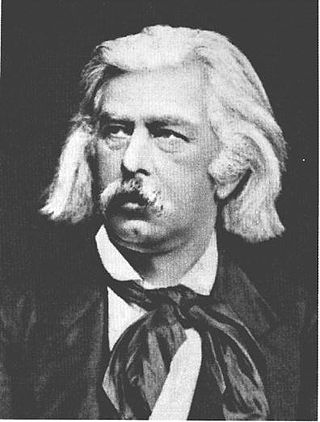
Heinrich Ernst Schirmer was a German-born architect most noted for his work in Norway. Schirmer worked in Norway from 1838 to 1883 and left his mark on a number of public buildings. He contributed significantly to the introduction of the so-called Swiss architectural style in Norway, based partly on Italian villa style, Gothic Revival, and neoclassicism.

The Diocese of Hamar is a diocese within the Church of Norway. The Diocese of Hamar includes all of the churches in Innlandet county plus the churches in Lunner in Viken county. Administratively, the diocese is divided into 10 deaneries and 164 parishes in the diocese. The seat of the Diocese of Hamar is located at the Hamar Cathedral in the city of Hamar.

Tunsberg is a diocese of the Church of Norway. It includes all of the parishes located within the counties of Vestfold and Buskerud, with the cathedral located in the city of Tønsberg. The Diocese of Tunsberg consists of the cathedral deanery and eight rural deaneries.
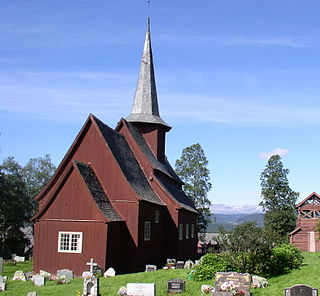
Hegge Stave Church is a 13th-century stave church in Norway. It is a parish church of the Church of Norway in Øystre Slidre Municipality in Innlandet county. It is located in the village of Hegge. It is the church for the Hegge parish which is part of the Valdres prosti (deanery) in the Diocese of Hamar. The brown, wooden church was built in a long church design around the year 1216 using plans drawn up by an unknown architect. The church seats about 150 people.

Hoff Church is a parish church of the Church of Norway in Østre Toten Municipality in Innlandet county, Norway. It is located in the village of Kraby, just east of the municipal centre of Lena. It is the church for the Hoff parish which is part of the Toten prosti (deanery) in the Diocese of Hamar. The white, stone church was built in a long church design during the 12th century using plans drawn up by an unknown architect. The church seats about 332 people.

Bergen Cathedral is a cathedral in the city of Bergen in Vestland county, Norway. It is the episcopal seat of the Diocese of Bjørgvin as well as the seat of the "Bergen domkirke" parish and the seat of the Bergen domprosti (arch-deanery). It is part of the Church of Norway. The first recorded historical reference to this church is dated 1181. It retains its ancient dedication to Saint Olaf. The cathedral seats about 900 people.

St. John's Church is a parish church of the Church of Norway in Bergen Municipality in Vestland county, Norway. It is located in the Sydnes area of the city of Bergen. It is one of the five churches for the Bergen Cathedral parish which is part of the Bergen domprosti (arch-deanery) in the Diocese of Bjørgvin. The red brick church was built in a cruciform design between 1891 and 1894 in the Gothic Revival style. The architect was Herman Backer. The church seats 690 people, making it the largest church in Bergen. It was consecrated on 15 March 1894.

Andreas Friedrich Wilhelm von Hanno was a German-born Norwegian architect, sculptor and painter. He was among the leading architects in Norway during the middle of the 1800s.

Molde Cathedral is a cathedral of the Church of Norway in Molde Municipality in Møre og Romsdal county, Norway. It is located in the town of Molde. It is the church for the Molde domkirke parish as well as the seat of the Molde domprosti (arch-deanery) and the episcopal seat of the Diocese of Møre. The white, brick church was built in a long church basilica design in 1957 by the architect Finn Bryn. The church seats about 700 people.

Bodø Cathedral is a cathedral of the Church of Norway in Bodø Municipality in Nordland county, Norway. It is located in the town of Bodø. It is the church for the Bodø domkirke parish which is also the seat of the Bodø domprosti (deanery) and the seat of the Bishop of the Diocese of Sør-Hålogaland. The concrete church was built in a long church basilica style in 1956 using plans drawn up by the architects Gudolf Blakstad and Herman Munthe-Kaas. The church seats about 850 people.

Fredrikstad Cathedral is a cathedral located in the west of the city of Fredrikstad in Østfold county, Norway. It is the episcopal seat of the Diocese of Borg of the Church of Norway. The church was elevated to cathedral status in 1969 with the creation of the new Diocese of Borg. The cathedral has space for 1100 people.

Tønsberg Cathedral is a cathedral that is the episcopal seat of the Diocese of Tunsberg within the Church of Norway. It is located in the centre of the city of Tønsberg in Tønsberg Municipality in Vestfold county, Norway. It is the main church for the "Tønsberg domkirke" parish which is part of the Tønsberg domprosti (deanery) in the Diocese of Tunsberg. The brown brick church was built in a long church design in 18 using plans drawn up by the architect. The church seats about 500 people.
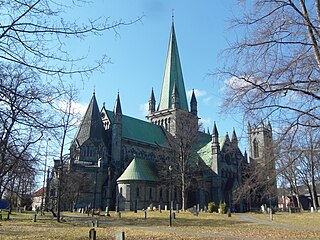
Church building in Norway began when Christianity was established there around the year 1000. The first buildings may have been post churches erected in the 10th or 11th century, but the evidence is inconclusive. For instance under Urnes Stave Church and Lom Stave Church there are traces of older post churches. Post churches were later replaced by the more durable stave churches. About 1,300 churches were built during the 12th and 13th centuries in what was Norway's first building boom. A total of about 3,000 churches have been built in Norway, although nearly half of them have perished. From 1620 systematic records and accounts were kept although sources prior to 1620 are fragmented. Evidence about early and medieval churches is partly archaeological. The "long church" is the most common type of church in Norway. There are about 1620 buildings recognized as churches affiliated with the Church of Norway. In addition, there are a number of gospel halls belonging to the lay movement affiliated with the Church of Norway as well as churches belonging to other Christian bodies. Until the 20th century, most churches were built from wood. 220 buildings are protected by law, and an additional 765 are listed as valuable cultural heritage.
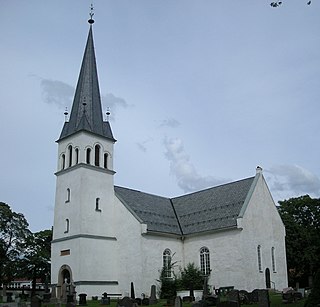
Furnes Church is a parish church of the Church of Norway in Ringsaker Municipality in Innlandet county, Norway. It is located in the village of Furnes. It is the church for the Furnes parish which is part of the Ringsaker prosti (deanery) in the Diocese of Hamar. The white, stone church was built in a cruciform design in 1708 using plans drawn up by the architect Hans Nielsen. The church seats about 390 people.
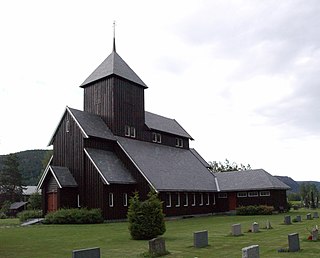
Begnadalen Church is a parish church of the Church of Norway in Sør-Aurdal Municipality in Innlandet county, Norway. It is located in the village of Begnadalen. It is the church for the Begnadalen parish which is part of the Valdres prosti (deanery) in the Diocese of Hamar. The brown, wooden church was built in a long church design in 1964 using plans drawn up by the architects Arnstein Arneberg and Per Solemslie. The church seats about 240 people.
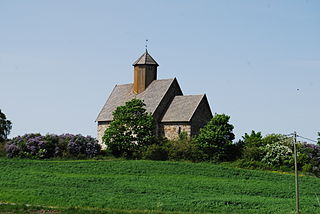
Old Tingelstad Church is a former parish church of the Church of Norway in Gran Municipality in Innlandet county, Norway. It is located in the village of Tingelstad. It is part of the Gran/Tingelstad parish which is part of the Hadeland og Land prosti (deanery) in the Diocese of Hamar. The gray, stone church was built in a long church design around the year 1220 using plans drawn up by an unknown architect. The church seats about 110 people.

Tingelstad Church is a parish church of the Church of Norway in Gran Municipality in Innlandet county, Norway. It is located in the village of Tingelstad. It is one of the churches for the Gran/Tingelstad parish which is part of the Hadeland og Land prosti (deanery) in the Diocese of Hamar. The red brick church was built in a long church design in 1866 using plans drawn up by the architects Heinrich Ernst Schirmer and Wilhelm von Hanno. The church seats about 450 people.



























